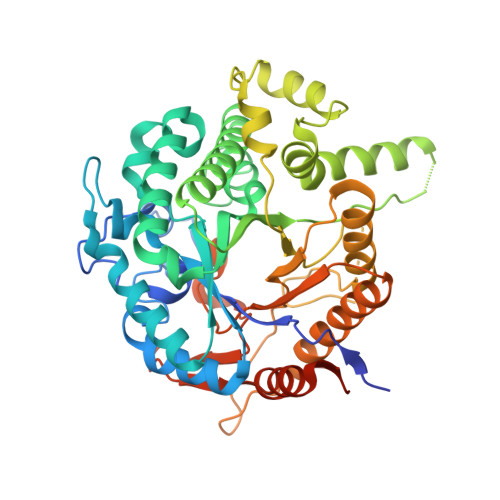Producing natural vanilla extract from green vanilla beans using a beta-glucosidase from Alicyclobacillus acidiphilus.
Delgado, L., Heckmann, C.M., De Benedetti, S., Nardini, M., Gourlay, L.J., Paradisi, F.(2021) J Biotechnol 329: 21-28
- PubMed: 33508335
- DOI: https://doi.org/10.1016/j.jbiotec.2021.01.017
- Primary Citation of Related Structures:
6ZIV - PubMed Abstract:
Current methods for the production of natural vanilla extract are long and tedious, and the efficiency of the vanillin extraction is usually conditioned by different factors during the traditional curing process (temperatures and weather conditions). As an important fraction of vanillin is present in the form of glucovanillin in green beans, endogenous β-glucosidases contribute to its hydrolysis; however, these enzymes lose efficiency during the curing process. The use of extremophilic organisms as a source of an appropriate exogenous enzyme can offer a valid alternative when producing natural vanillin. Here, a β-glucosidase from the thermo-acidophilic organism Alicyclobacillus acidiphilus (AacGH1) was cloned, expressed in E. coli BL21, and fully characterized in respect to both function and crystal structure. Notably, AacGH1 was stable at a temperature up to 50 °C and exhibited good tolerance to glucose, fructose and organic solvents, in particular it maintained full activity in the presence of up to 20 % (v/v) ethanol. The enzyme was then successfully applied to an ethanol-water (20 % (v/v)) extract of green vanilla beans and the complete hydrolysis of glucovanillin (1.7 mM) to vanillin, and other flavour compounds commonly found in vanilla, was achieved using 0.5 mg/mL of enzyme in just 15 min at 30 °C.
Organizational Affiliation:
University of Nottingham, School of Chemistry, University Park, Nottingham, NG7 2RD, United Kingdom.


















